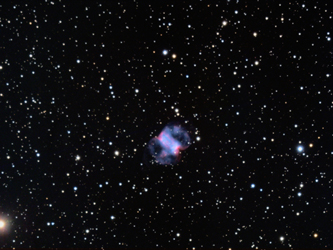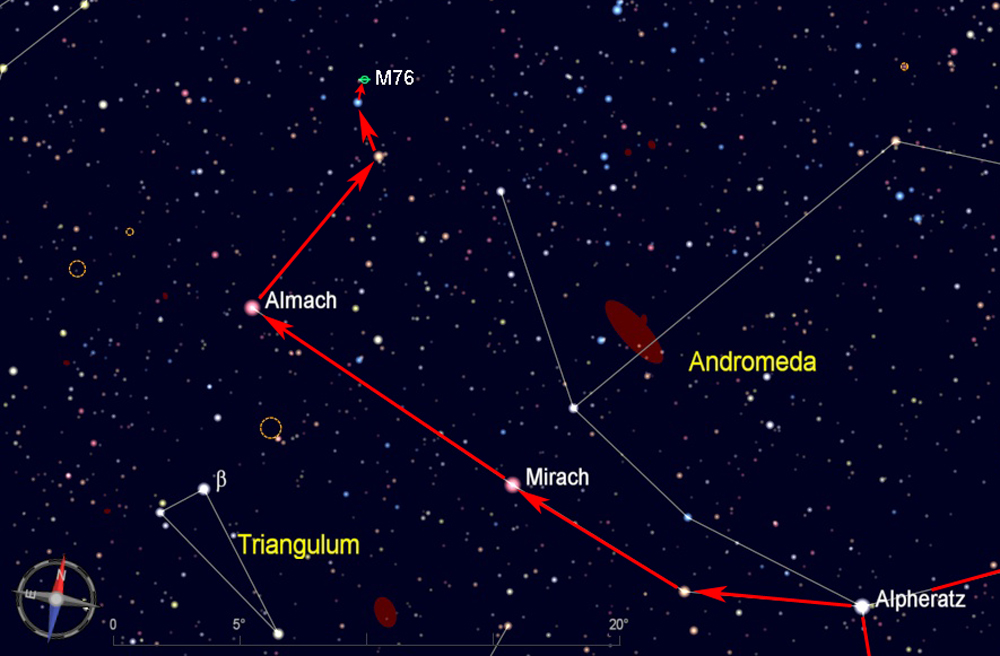
Start by finding the Great Square of Pegasus, which is rises in the eastern sky during the early fall evenings, is high overhead later in the fall, and sinks in the western sky during early winter. To be sure you know how the square is oriented in the sky, look for the two stars outside the northwest corner of the square (circled in the chart below) that form a small triangle with Scheat.

The constellation Andromeda stretches to the northeast from the Great Square, starting at the second-magnitude star Alpheratz. Using the naked eye, follow the stars of Andromeda east to Almach, another magnitude 2 star. Take a right turn at Almach to a slightly dimmer star, and then head north as shown below to the area of Messier 76. A magnitude 4 star less than a degree to the south of M76 can help to locate its position.
